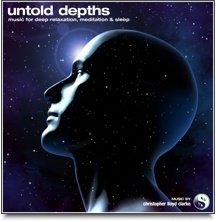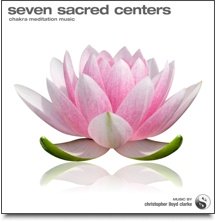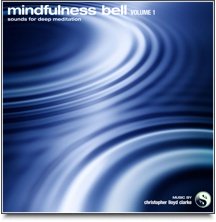For Lovers of Meditation
An Exploration of Psychoacoustics, Music for Meditation and Deep Relaxation
Psychoacoustics / adjective:
A branch of science dealing with the perception of hearing and sensations produced by sound.
As an ambient music composer, whenever I create new music for meditation and deep relaxation, I always take the principles of psychoacoustics into account. Essentially, psychoacoustics is the study of the perception of sound, and the ways in which it affects your body and mind. You could think of it as a form of music psychology.
But what does psychoacoustics have to do with meditation and deep relaxation?
Let’s find out...
The fundamental reason why we enjoy listening to music is because it is mood altering. Music can stimulate or sooth you. It can relieve stress and it can induce stress. It can elevate you or depress you.
Music can be extremely powerful in this regard. The tones, textures, melodies, harmonies and the tempo of a piece of music can affect you psychologically, emotionally and even physically.
Have you ever been so touched by a beautiful piece of music that you cried? Have you ever cringed at the sound of fingernails being dragged down a chalkboard? Most people answer “yes” to both of these questions.
So if sound can have such a strong effect on us, then how can we use this to our advantage? What can the study of psychoacoustics tell us about the most effective types of music and sounds for meditation and deep relaxation?
Some types of meditation music are certainly more relaxing than others. Some sounds are particularly hypnotic, some cause trance-like states and some types of music, like those containing binaural beats, can even alter the frequency of your brainwaves in such a way that your mind is coaxed, quite directly, into a state of deep meditation.
Let's get to know what some of these sounds are and how they are used to create music for deep meditation.
Sonic Mantras
Most forms of ambient meditation music, with their soothing tones, slow tempo and gentle harmonies, are great for unwinding and slowing down the tempo of your thoughts. Sonic Mantra meditation music takes this experience to a higher level by introducing hypnotic, mantra-like sounds that help to lull your mind into a state of meditation. This type of music is what I sometimes call "true" meditation music, because it embraces the time-honoured technique of using mantras to induce a state of meditation. You can hear a brief example of Sonic Mantra meditation music below.
|
Deep Within
|
For the best experience, listen at a soft volume and use high quality speakers or headphones.
The Music of Nature
Since the dawn of time we have been surrounded by the wonderful sounds of Mother Nature. It’s only been during the last few decades or so that man-made music has become commonplace…and along with it has come all the noise and cacophony of modern industry and media. We have become cut off from the sounds of our natural environment, and bombarded by sounds that create stress.
Listening to the sounds of nature reminds us that we are a part of a greater whole. The sound of birds in the morning, the sound of crickets in the evening…these are just some of the sounds that remind us that our life extends beyond the four walls that surround us at our home or office. The ebb and flow of waves on a beach, the sound of wind in the trees…these soothing sounds are innately peaceful, and listening to them can help reconnect you to "the bigger picture" of life.
Take a moment to appreciate just how relaxing the sounds of nature can be:
|
Gentle Thunderstorm
|
For the best experience, listen at a soft volume and use high quality speakers or headphones.
Drones
The word “drone” probably sounds a bit dull and uninspiring to most people, but drone-like sounds can be very relaxing and are most suitable for deep meditation music. A classic example of a drone-like sound that has been used for meditation for thousands of years is the sound of the “Om” mantra, but drones may include any form of sound that is:
1. Unbroken. The sound does not stop and start, and
2. Relatively unchanging in pitch.
|
Om Chanting
|
For the best experience, listen at a soft volume and use high quality speakers or headphones.
Drone sounds usually have no melody or tempo that can be discerned, but they do have other important qualities that must be balanced so that the drone is musically pleasing. For example, drones often have a “texture” to them that can be described with words like “smooth”, “fine”, “soft” or “coarse”, and a timbre that can be described with words like “celestial”, “dark” or “complex” just to name a few. The pitch of a drone must not be too high or the drone may become shrill and tiring, and it must not be too low or the drone may become imperceptible on some stereo systems. A drone can also be made up of many layers of sounds, and these sounds must harmonize with each other in ways that are pleasurable to listen to.
Drones may also be used to provide a hypnotic foundation to a piece of music that contains other elements such as chimes, nature sounds or instrumentation. Here is an example:
|
Drone Foundation with Meditative Instrumentation
|
For the best experience, listen at a soft volume and use high quality speakers or headphones.
When it comes to meditation music, drones can extremely useful. They tend to be very calming, and when played on headphones they seem to fill up all the space in your mind and wash away your thoughts with their constant, soothing tones. Unlike music that is melodic and dynamic, drones will not overstimulate your mind or distract you while you are in the deepest states of meditation. On the contrary....drones can actually draw your mind into a state of deep meditation, and they are often used to great effect in binaural meditation productions.
Psychoacoustics and Brainwave Entrainment
The study of psychoacoustics explains the ways in which sound affects us on an emotional and psychological level, and it also introduces us to some special acoustic technologies that can have an important role to play in creating music that helps you to meditate. Specifically I'm talking about music for brainwave entrainment.
You have probably already heard of the word “brainwaves” and you may already know that brainwaves can be measured with a machine called an electroencephalograph (EEG). An EEG measures the frequency of the activity in your brain.
When you are awake and alert, your mind operates at a higher frequency than when you are drowsy or asleep. An EEG allows us to measure these changes, just as it allows us to measure the brainwave frequency of a person who is in a deep meditation. With this in mind, we come to the whole point of brainwave entrainment music...
Certain sounds can be used to alter your brainwaves so as to induce a state of meditation.
Brainwave entrainment is more simple than it might sound at first. Think of it this way...imagine you are holding two tuning forks of the same pitch. If you strike one of them and hold it close to the other, they will both vibrate at the same frequency. Brainwave entrainment or "brainwave synchronization" is similar to this. It relies upon the "frequency following" response, a naturally occurring phenomenon that explains how the human brain tends to change its dominant frequency towards the frequency of an external stimulus. To cut a long story short, sound can be used as a stimulus to change the frequency of the brain.
As you might expect, brainwave entrainment doesn’t just work with any old sound. To give rise to the frequency following response, specific types of sounds must be used. Here is a brief introduction to the two most common types of sounds for brainwave entrainment.
Binaural Beats
Binaural frequencies are created by taking advantage of an acoustic effect known as “wave interference” to create sounds that stimulate the frequency following response. The following article on binaural frequencies is a bit technical, but it presents a clear and detailed explanation of how wave interference occurs, and how it is used to create binaural beats that are used for brainwave entrainment.
Get the full inside story on binaural beats...
Discover binaural meditation - one of the easiest ways to meditate deeply...
Isochronic Tones
Like binaural beats, isochronic tones are also used to stimulate the frequency following response.
In contrast to binaural beats, isochronic tones can be listened to without the aid of headphones. In essence, isochronic tones are simply a repetitive pulsing sound that encourages the frequency of your brainwaves to synchronize with the frequency of the isochronic tones. Much like the hypnotic effect of a pendulum clock, isochronic tones are a simple but effective way to encourage various states of relaxation and meditation. From a psychoacoustic perspective, they also have some shortcomings which I explore further in this article.
Deep Meditation Music
Meditation music is sometimes regarded as being “simple”. Sure enough, most meditation music is not as complex as say, a full orchestral composition, but like many things in life that appear simple, there is often great care and finesse involved in crafting such an art form. As you have by now come to realize, meditation music can be a pretty deep subject!
Not only is meditation music something that you can appreciate on a sensory level, it’s exciting to realize that it can be created in such a way that it has a direct effect on the activity of your mind. It is with this excitement that I apply the principles of psychoacoustics to meditation music...to help you experience the most relaxing, deepest meditation possible.
Please follow these links for more information about Sonic Mantra meditation music and binaural meditation music.
After silence, that which comes nearest to expressing the inexpressible is music.
~ Aldous Huxley (1894 - 1963) ~
This article is copyright protected, however you may republish it online or in print media provided that you include the following credit, including the active link:
Article by Christopher Lloyd Clarke from www.The-Guided-Meditation-Site.com.









